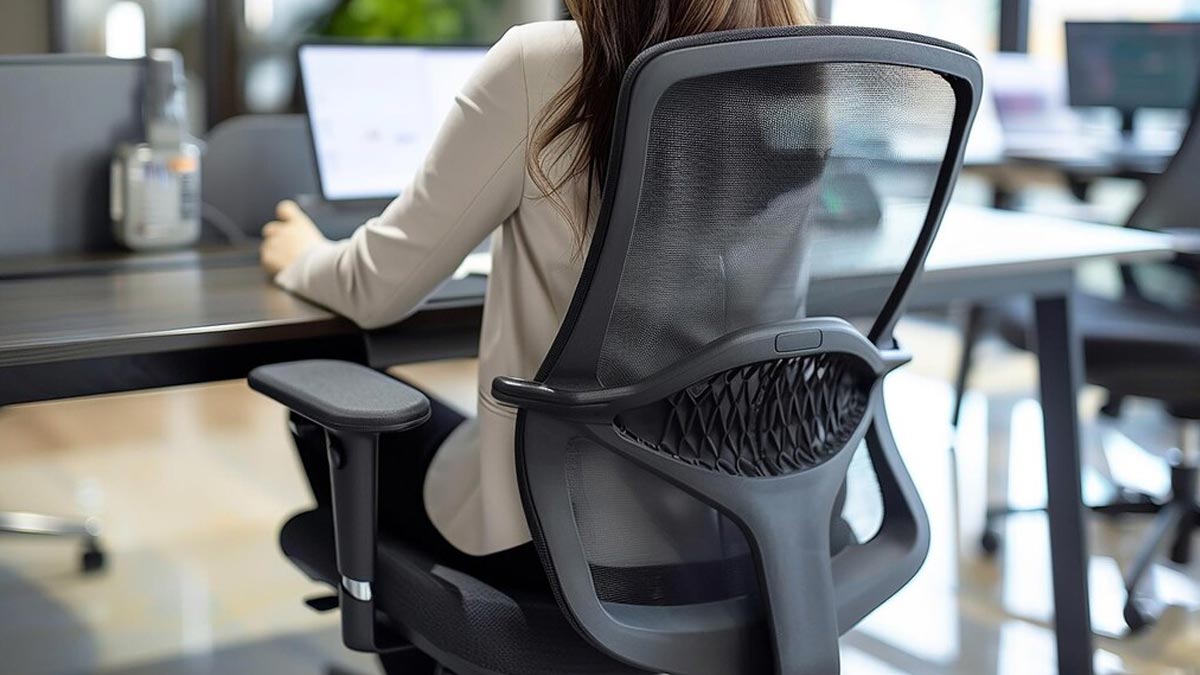
Many people in their 30s and beyond work desk jobs, spending 9-5 in an office setting. While sitting for long periods might seem comfortable, it can lead to negative consequences over time. Working professionals often complain of having lower back issues, muscle soreness, and numbness or tingling in their buttocks and legs, which are symptoms largely caused by prolonged sitting, which leads to what's commonly known as 'office chair butt.' If you're unfamiliar with this term, keep reading to learn more.
Table of Content:-
What Is An Office Chair Butt?![]()
Office chair butt is a term that refers to the negative effects of sitting for long periods. Prolonged sitting can often impact your glutes and change the appearance of your buttocks, making them seem flatter or softer.
This is because when you sit for extended hours without moving, the glutes become inactive. When there is no activity, it can lead to muscle atrophy, or wasting or thinning of muscle mass, which in turn can cause reduced strength, muscle tone, and a flat appearance in the buttocks.
Additionally, sitting for hours can shorten the hip flexors, which further inhibits the activation of the glutes, affecting overall posture and mobility.
Also Read: Key Benefits Of Good Posture: Know How Position Affects Health
Impact On Posture, Mobility, And Flexibility![]()
Poor posture, reduced mobility, and stiffness are some of the common negative consequences of office chair butt.
As discussed, prolonged sitting can lead to inactive glutes, which may impact posture and cause imbalance.
Additionally, weak glutes contribute to lower back pain and increased strain on the spine, which can again affect posture.
When you have inactive glutes, they weaken and, over time, are likely to limit the body’s ability to move efficiently, affecting activities like walking, running, and squatting. Other than that, tight hip flexors caused by sitting for long hours can result in reduced flexibility and stiffness in the hips and legs.
How To Prevent Or Treat Office Chair Butt![]()
If you are someone who spends hours on your desk and sits for prolonged periods, then here are some ways to prevent office chair butt:
- Invest in an ergonomic chair that can help prevent sore buttocks and back stress.
- Ensure that you get up and move around every 60–90 minutes.
- Use a seat cushion that can help reduce and prevent buttock pain.
- Use armrests that can help relieve pressure on the seat and reduce muscle tension in your shoulders and neck.
- Practise good posture
- Elevate your legs
- Stretch from time to time
Also Read: How Does Walking Daily Help In Reducing Your Lower Back Pain?
Role Of Strength Training
Strength training exercises are a great way to engage your muscles and strengthen them. These are a type of workout that involves adding resistance and pushing your muscles to work harder. You can either indulge in it by using your own body or you can include equipment like dumbbells, resistance bands, weight machines, or medicine balls to challenge your body's muscles.
Therefore, including resistance training with weights or bands can help build and maintain glute strength. Additionally, it can enhance glute function and alleviate pressure on the lower back.
Also watch this video
How we keep this article up to date:
We work with experts and keep a close eye on the latest in health and wellness. Whenever there is a new research or helpful information, we update our articles with accurate and useful advice.
Current Version



